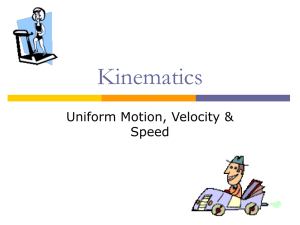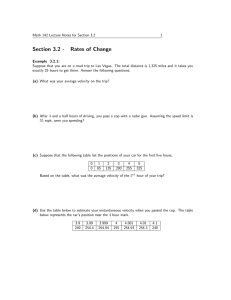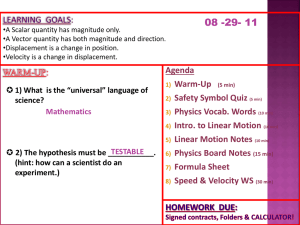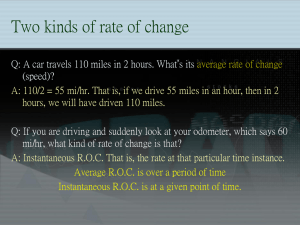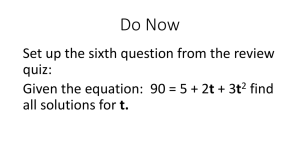Speed vs velocity
advertisement
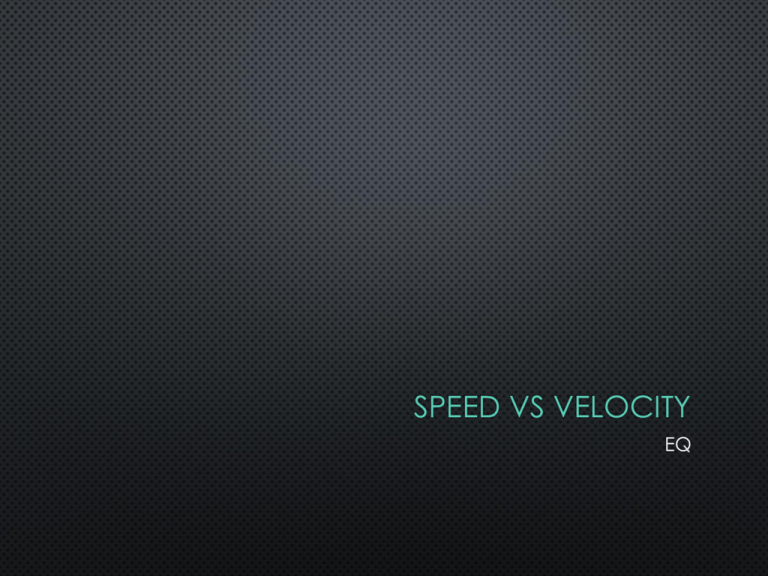
SPEED VS VELOCITY EQ DEFINITION OF SPEED • SPEED IS THE DISTANCE TRAVELED PER UNIT OF TIME (A SCALAR QUANTITY). x = 20 m A Time t = 4 s B s= x t = 20 m 4s s = 5 m/s Not direction dependent! DEFINITION OF VELOCITY • VELOCITY IS THE RATE OF CHANGE OF DISPLACEMENT PER UNIT OF TIME. (A VECTOR QUANTITY.) s = 20 m A d= 12 m 20o Time t = 4 s B d v t d f dxi 12m v v t f tti 4s v = 3 m/s at 200 N of E Direction required! EXAMPLE 1. A RUNNER RUNS 200 M, EAST, THEN CHANGES DIRECTION AND RUNS 300 M, WEST. IF THE ENTIRE TRIP TAKES 60 S, WHAT IS THE AVERAGE SPEED AND WHAT IS THE AVERAGE VELOCITY? Recall that average x2 = 300 m speed is a function only of total distance start and total time: x1 = 200 m Total distance= 200 m + 300 m = 500 m x 500m AveSpeed t 60 s Direction does not matter! Avg. speed 8.33 m/s EXAMPLE 1 (CONT.) NOW WE FIND THE AVERAGE VELOCITY, WHICH IS THE NET DISPLACEMENT DIVIDED BY TIME. IN THIS CASE, THE DIRECTION MATTERS. v x f xo t = 60 s xf = -100 m x1= +200 m t x0 = 0 m; xf =200-300= -100 m 100m 0m v 1.67 m / s 60 s xo = 0 Direction of final displacement is to the left as shown. Average velocity: v 1.67 m/s, West Note: Average velocity is directed to the west. Instantaneous speed: the speed at any given instant in time. Average speed: the average of all instantaneous speeds; found simply by a distance/time ratio. GUIDED AND INDIVIDUAL PRACTICE






